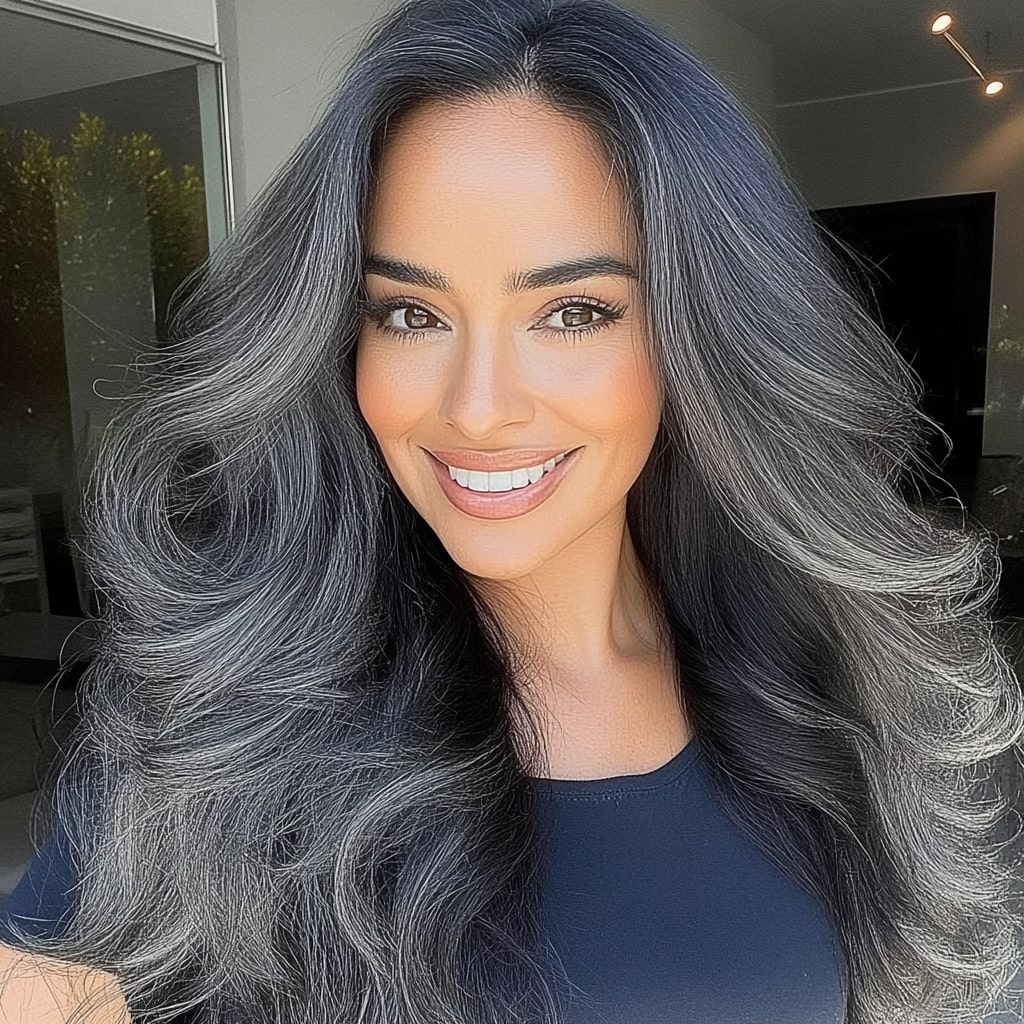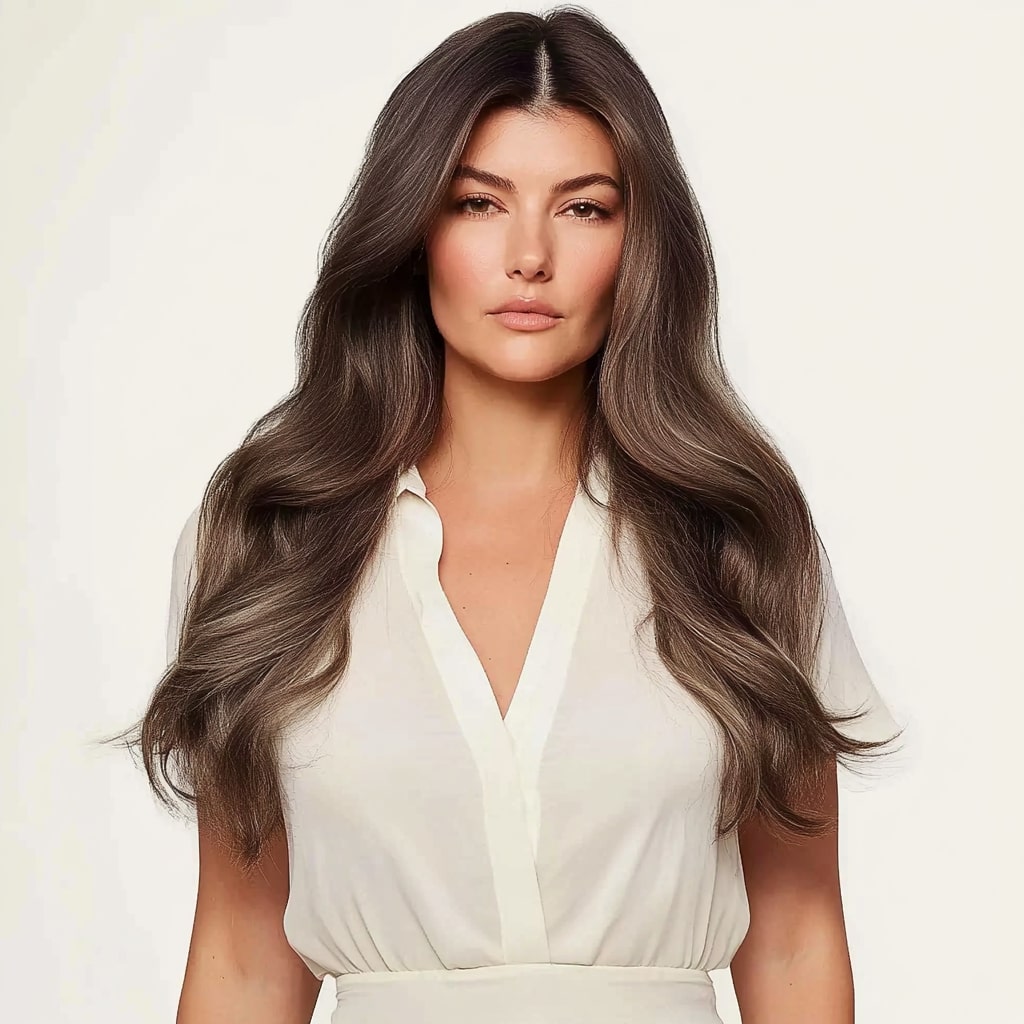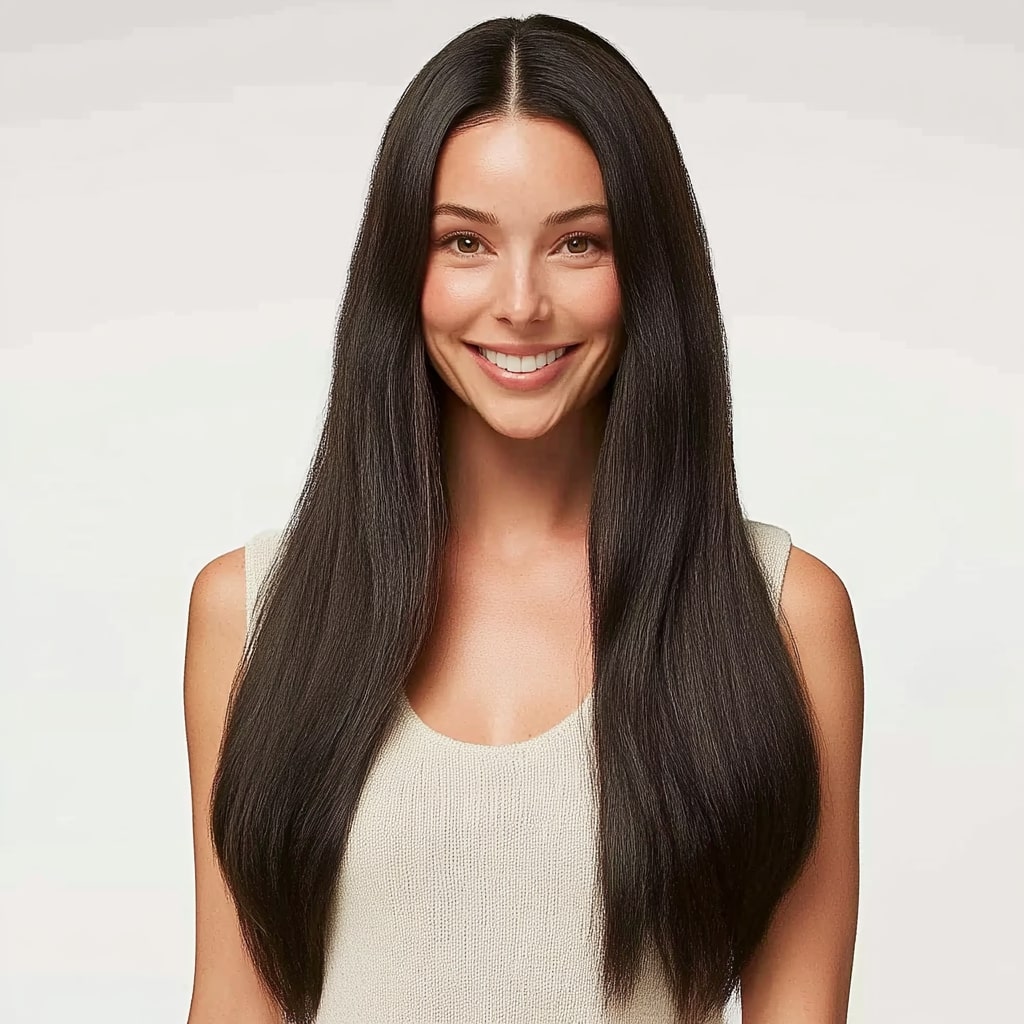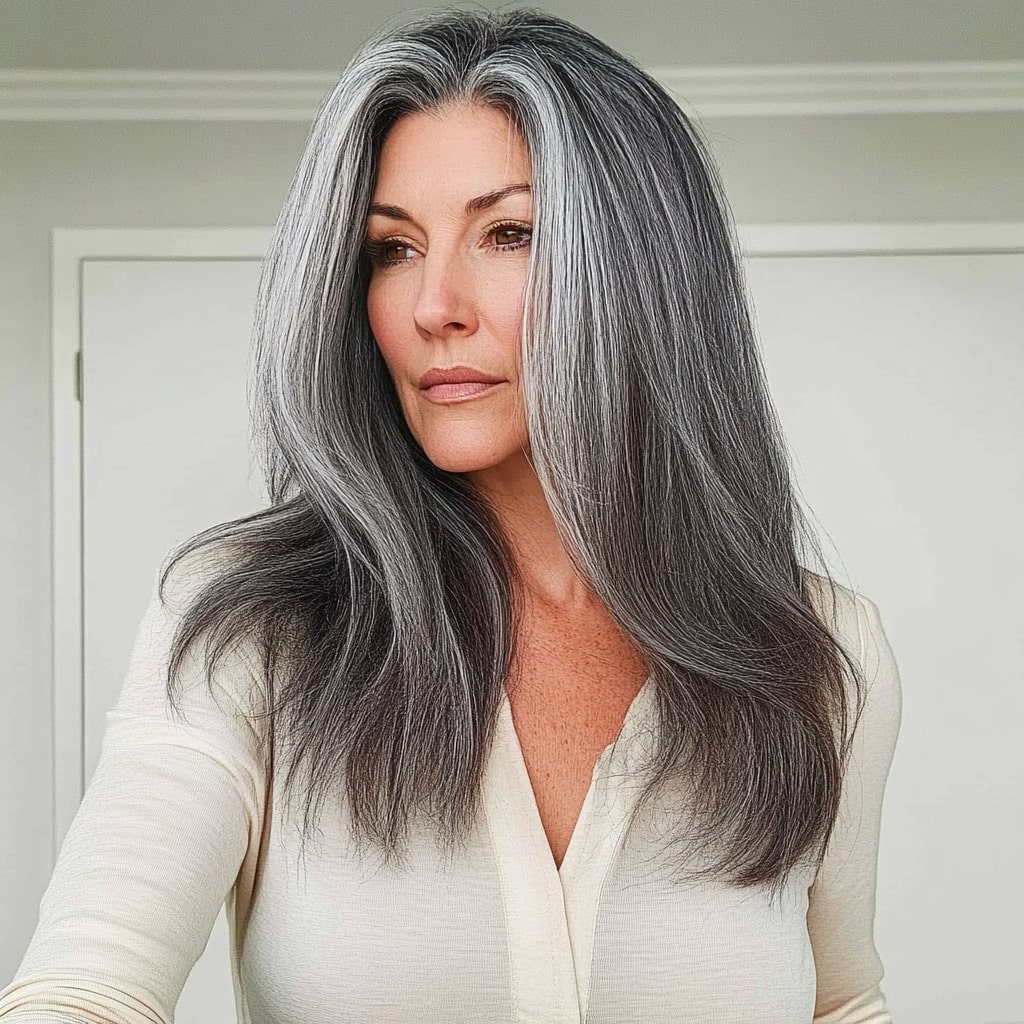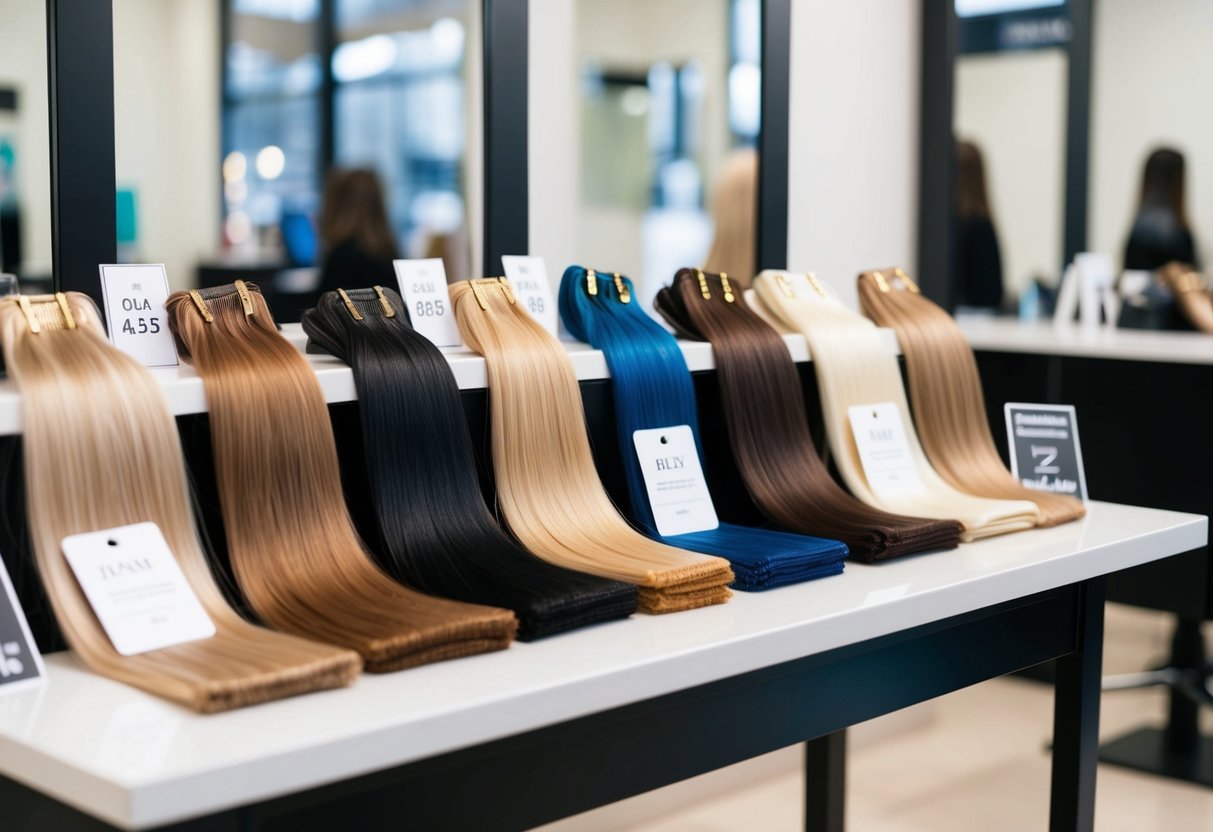The Ultimate Guide to Heat Styling Hair Extensions
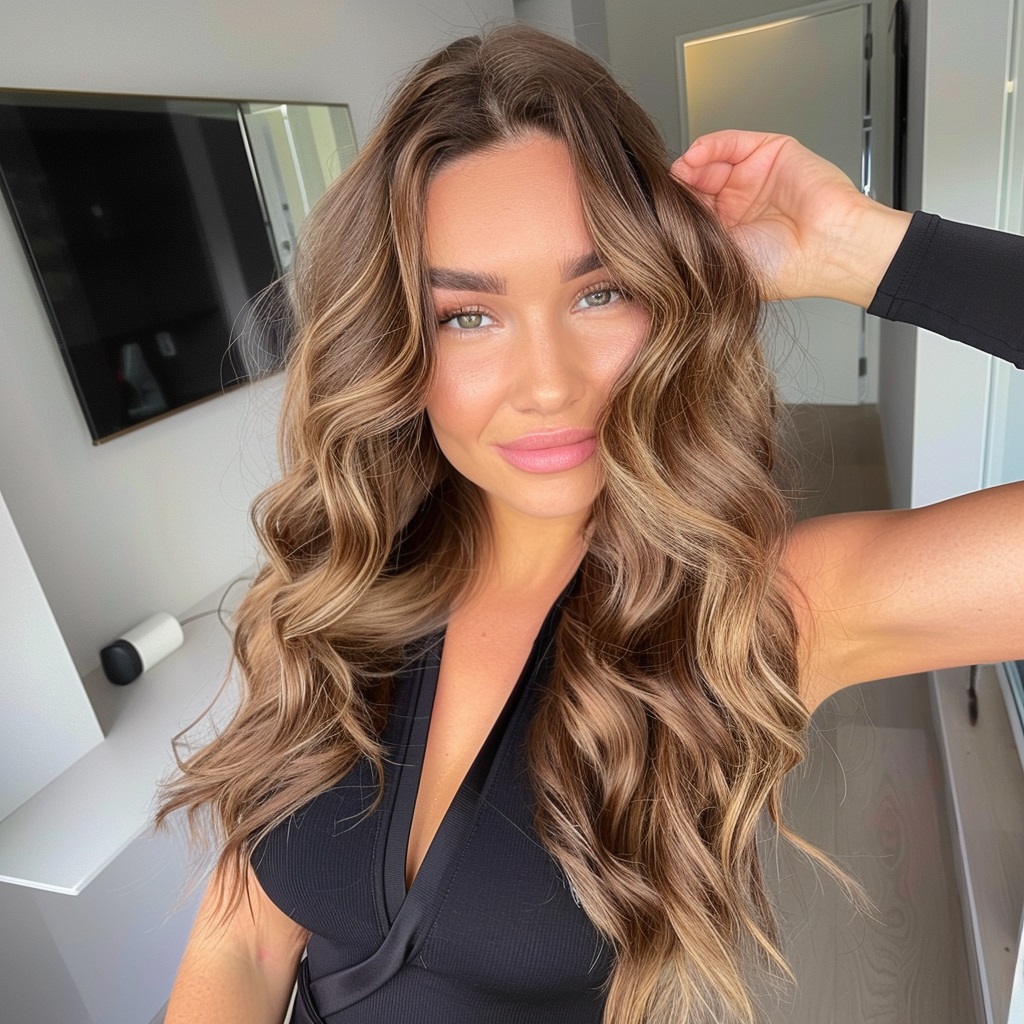
Key Takeaways
- Heat styling offers versatility for hair extensions but requires proper techniques and precautions to avoid damage.
- Always clean, dry, and apply heat protectants to your extensions before styling.
- Use high-quality tools with adjustable temperature settings, and avoid excessive heat.
- Follow recommended techniques to minimize stress on the hair extensions.
- Proper post-styling care, including cooling down, correct storage, and regular maintenance, is essential to keep extensions in top condition.
Introduction
Heat styling is a popular method to achieve various looks and styles with hair extensions. Whether you're curling, straightening, or creating waves, using heat tools can transform your extensions and enhance your overall appearance. However, to maintain the quality and longevity of your hair extensions, it's crucial to understand the proper techniques and precautions. This guide will cover the essential do's and don'ts of heat styling, ensuring your extensions look fabulous while staying in excellent condition.
Section 1: The Importance of Heat Styling for Hair Extensions
Benefits of Heat Styling
Heat styling allows you to easily change your hairstyle, providing versatility and flexibility. It can add volume, create smooth and sleek looks, or give you beautiful curls and waves. With the right techniques, heat styling can enhance the natural appearance of your hair extensions, making them blend seamlessly with your natural hair.
Potential Risks
While heat styling offers many benefits, it also comes with potential risks. Excessive heat can damage the hair fibers, leading to dryness, breakage, and a shortened lifespan of your extensions. It's essential to be aware of these risks and take the necessary steps to minimize damage, ensuring your hair extensions remain in top condition.
Section 2: Preparing Your Hair Extensions for Heat Styling
Cleaning and Drying
Before applying any heat, it's important to ensure your hair extensions are clean and thoroughly dry. Dirt and residue can cause heat damage and uneven styling. Wash your extensions with a gentle, sulfate-free shampoo and conditioner, then allow them to air dry completely or use a blow dryer on a cool setting.
Using Heat Protectants
Always apply a heat protectant spray or serum to your hair extensions before using any heat styling tools. Heat protectants form a protective barrier around the hair strands, reducing the risk of heat damage and helping to maintain the moisture and integrity of the extensions. This step is crucial to preserving the quality and longevity of your hair extensions.
Section 3: Heat Styling Tools and Techniques
Choosing the Right Tools
Selecting the appropriate heat styling tools is crucial for the health of your hair extensions. Use high-quality tools with adjustable temperature settings to control the heat level. Ceramic or tourmaline plates are recommended as they distribute heat evenly and minimize damage.
Temperature Settings
Avoid using the highest heat settings on your styling tools. For hair extensions, a temperature range of 250-300°F (120-150°C) is usually sufficient. Higher temperatures can cause significant damage, so always start with the lowest setting and increase gradually if necessary.
Recommended Techniques
When styling your hair extensions, use techniques that minimize stress on the hair. For curling, wrap the hair around the barrel without overlapping to ensure even heat distribution. For straightening, use smooth, consistent passes and avoid going over the same section multiple times. These techniques help in achieving the desired look while reducing the risk of damage.
Section 4: Do's and Don'ts of Heat Styling
Do's
Proper Sectioning Section your hair extensions properly before styling. This ensures even heat distribution and allows you to style smaller, manageable sections without missing any spots.
Maintaining a Safe Distance Keep the heat styling tools at a safe distance from the roots of the extensions. This helps prevent damage to the attachment points and ensures the extensions remain securely in place.
Regular Breaks Take regular breaks between styling sessions to allow the hair extensions to cool down. Overheating the hair can cause irreparable damage, so giving your extensions a break is crucial.
Don'ts
Avoiding Overheating Do not use excessive heat on your hair extensions. High temperatures can cause significant damage, leading to dry, brittle hair that is prone to breakage.
Not Styling Wet Hair Never use heat styling tools on wet or damp hair extensions. This can cause the hair to burn and become damaged. Always ensure your extensions are completely dry before applying heat.
Avoiding Certain Products Avoid using heavy oils or alcohol-based products before heat styling. These products can either weigh down the hair or cause it to become brittle when exposed to heat. Use light, heat-friendly products instead.
Section 5: Post-Styling Care
Cooling Down
After heat styling, allow your hair extensions to cool completely before touching or manipulating them. This helps to set the style and reduce the risk of damage.
Storing Extensions Properly
Store your hair extensions properly when not in use. Use a hanger or a storage box to keep them tangle-free and protected from dust and environmental damage. Proper storage prolongs the life and quality of your extensions.
Regular Maintenance
Regularly maintain your hair extensions by washing and conditioning them with gentle, sulfate-free products. Detangle them carefully using a wide-tooth comb or a brush designed for extensions. Proper maintenance keeps your extensions looking fresh and extends their lifespan.
Conclusion
Heat styling can transform your hair extensions, offering versatility and a wide range of styles. By following the proper techniques and precautions, you can enjoy the benefits of heat styling while minimizing the risks. Remember to prepare your extensions adequately, use the right tools and settings, and follow the e
FAQ
-
Can I use any heat styling tool on my hair extensions? Use high-quality tools with adjustable temperature settings and avoid using tools with excessively high heat.
-
What temperature should I use for styling my hair extensions? A temperature range of 250-300°F (120-150°C) is usually sufficient.
-
Do I need to wash my extensions before heat styling? Yes, ensure your extensions are clean and thoroughly dry before applying heat.
-
Is it necessary to use a heat protectant? Yes, always use a heat protectant spray or serum to minimize heat damage.
-
Can I style my extensions while they are wet? No, never use heat styling tools on wet or damp hair extensions.
-
How often should I heat style my hair extensions? Limit heat styling to avoid excessive damage. Give your extensions regular breaks to cool down.
-
What products should I avoid before heat styling? Avoid heavy oils and alcohol-based products that can cause damage when exposed to heat.
-
How should I store my hair extensions after styling? Store them in a hanger or storage box to keep them tangle-free and protected.
-
What should I do if my extensions get damaged from heat styling? Deep condition and use restorative treatments to help repair the damage.
-
Can I use hot tools on synthetic hair extensions? Only if they are labeled as heat-friendly. Otherwise, heat can melt synthetic fibers.
ssential do's and don'ts. With proper care and maintenance, your hair extensions will remain in excellent condition, providing you with beautiful, long-lasting results.

 My Store Credit
My Store Credit
 Buy Again
Buy Again

